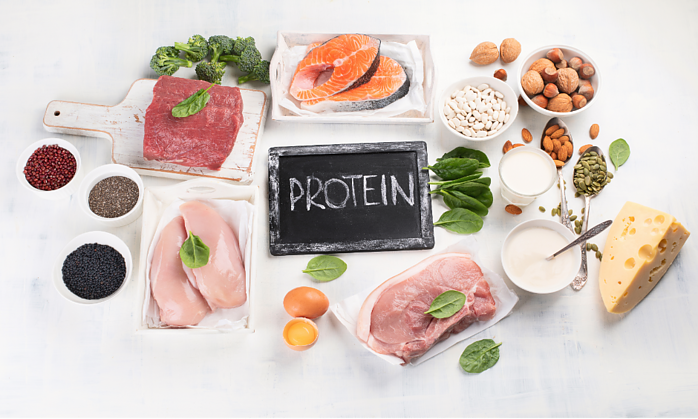I’m going to start with the basics: metabolism is essentially your body’s engine. It’s the process your body uses to convert the food you eat into the energy you need to breathe, move, and do everything else to stay alive. But this isn’t just about the calories you burn; it’s also about your body’s overall well-being.
You’re going to find out about how enzymes break down the food into nutrients, and how these nutrients are either used right away or stored by your body for future use. It’s a fascinating interplay of hormones and bodily functions that keep you ticking.
In my opinion, it’s crucial to understand that metabolism is a combination of two types of reactions: catabolism, where larger molecules are broken down into smaller ones, releasing energy, and anabolism, where the body uses energy to build or repair tissues, including muscle. Together, these processes allow your body to regulate energy and keep everything in balance.
Decoding Fat Loss: Metabolism’s Role in Weight Management
When I talk about metabolism and weight loss, there’s a lot to unpack. Your metabolism isn’t just a calorie burner; it’s a complex system that dictates how your body uses energy. Here’s the breakdown: essentially, whenever you eat, enzymes in your body’s cells break down the food and turn it into energy. This energy keeps your heart beating, your mind thinking, and your legs churning during a grueling workout.
If you’re wondering about the connection between metabolism and fat loss, it’s all about the balance of calories. When your metabolic rate is higher, your body needs more energy. In the absence of available energy from recently consumed food, your body turns to fat stores to keep things running. Essentially, increasing your metabolism helps your body rely on fat for fuel more often, which aids in reducing fat over time.
You might think that some people are just born with a high metabolic rate that keeps them from gaining weight, but there’s much more to the story. Yes, genetics play a role, but everyone can influence their metabolism to a certain extent through diet and exercise. Don’t worry too much about genetics; focus on what you can control, like nutrition and activity levels.
Moving smoothly into diet’s role in this entire equation, it becomes apparent that what you eat can have a big impact on how efficiently your body burns fat. A high protein diet encourages muscle growth, which is my cue to elaborate on the significant relationship between dietary choices, muscular development, and metabolic health in the next section.
The Protein Impact: How Diet Influences Muscle and Metabolism
So you’re looking to understand how your eating habits can fuel your metabolic engine, especially when it comes to protein. Let’s unpack that. Include protein-rich foods in your diet, and you’re gearing your body up for some serious muscle-building. It’s the building block your muscles crave. Lean meats, beans, and tofu are just a few items on the protein power list that can make a real difference.
Now, you might be wondering, how does all this protein connect to metabolism? Here’s the lowdown: When you eat protein, your body has to work a bit harder to break it down. That’s a good thing—because while it’s putting in that extra effort, your metabolic rate gets a nudge upward. It’s like turning up the heat on your body’s calorie-torching furnace. More muscle equals a higher resting metabolic rate. It’s that simple.
But remember, balance is key. A high protein diet is beneficial, but it needs to play nice with fats, carbs, and other nutrients to form a well-rounded diet. Overdoing it with protein isn’t the way to go, as it can put unnecessary strain on your body, particularly your kidneys.
In my opinion, supplementing your protein intake with a smart exercise routine is where the magic happens. Up next, I’ll take you through how strength training has a say in this metabolic mystery and why it’s a must on your road to boosting your metabolism.
Strength Training: A Pillar for Enhancing Metabolic Health
Strength training goes beyond creating an aesthetic physique; it’s a cornerstone for boosting metabolic health. I’m going to break down why this is so effective for your metabolism. When you engage in strength training, you’re putting your muscles under stress in a good way.
This type of exercise leads to muscle hypertrophy, which means your muscle fibers grow in size and strength. Now, here’s where it gets really interesting. The more muscle mass you have, the more calories you burn at rest. That’s because muscle tissue is metabolically active, even when you’re not moving.
I want to walk you through how integrating strength training into your fitness regimen can be a game-changer. First off, consistent strength workouts lead to an increase in resting metabolic rate. This is the rate at which your body burns calories while you’re not doing anything at all – yes, even when you’re sitting on the couch!
You’re going to find out about the various types of strength training activities and how each can contribute to muscle growth, from bodyweight exercises to lifting weights. Also, it’s important to remember that getting the technique right is key to avoid injury and reap the most benefits.
Don’t worry too much about diving into heavy weights right from the start. You can always start small and gradually increase the intensity of your workouts. The objective is to challenge your muscles enough to stimulate growth, and sustainability is crucial for long-term success.
Even if you’re a complete beginner, choose something that resonates with you. Whether it’s resistance bands, free weights, or weight machines, there’s a lot of opportunity in diversity. Engaging different muscle groups and varying exercises can help maintain progress and prevent plateaus.
Remember, boosting metabolism through strength training isn’t just about the short-term gains. By increasing muscle mass, you’re setting up a foundation for sustained metabolic health, which carries a host of benefits as you age. Now that’s the strategy I like to leverage.
Natural Vs. Pharmaceutical: Safeguarding Health with Organic Metabolic Boosts
You’re going to find out about the lasting benefits of choosing natural ways to boost your metabolism. I’m here to help you understand why this path is not only effective but also safer and more sustainable in the long run.
When it comes to boosting metabolism, there are two main choices: go natural or use pharmaceutical aids. By choosing natural methods, like adjusting your diet and exercise routine, you’re investing in your body’s intrinsic capacity to regulate its metabolism effectively.
Pharmaceutical approaches may offer a quick fix, but they often come with a string of potential side effects and health risks. Don’t worry too much about the shortcuts to boosting your metabolism. In some cases, these drugs can cause more harm than good and may lead to dependency or disrupt natural metabolic processes.
Choosing something that resonates with you, like a new fitness routine or a refreshing, balanced diet, isn’t just a step towards a better metabolism; it’s a full commitment to your overall health and longevity. That’s the strategy I like to leverage, and I encourage you to do the same.
Remember, your first attempt doesn’t need to be your last. You can always adjust your approach down the road, but sticking to natural methods ensures that you’re building a strong, healthy foundation without undue risk to your well-being.
I really hope that you feel empowered to boost your metabolism the natural way, embracing a lifestyle that promotes not just a quicker calorie burn, but also vitality and a greater zest for life.